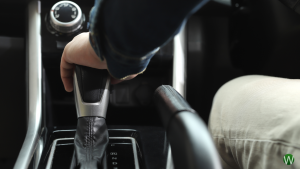The UK has one of the most rigorous driving tests in the world, which helps to keep its accident record one of the lowest in the world, but it got even more strict on 4 December 2017 when the DVSA introduced even more requirements to the test. Here’s a quick update on what’s new to the test, and what learners can expect.
Independent Driving
Having already introduced a 10-minute section of independent driving in 2011, the new test has doubled this requirement to 20 minutes.
This will mean that independent driving now takes up nearly half of the total exam, with learners being asked to follow road signs to a destination without the aid of the examiner giving directions. However, they won’t be asked to perform specific manoeuvres during this time either.
The SatNav
Bringing the test into the modern day is important to make sure it’s relevant to today’s driver, which is why the new sat nav section has been introduced. As much as 52% of drivers now own a sat nav, so you’ll be expected to follow its directions along a pre-determined route set by the examiner.

However, the DVSA have said that it doesn’t matter if candidates don’t follow the directions correctly as long as they do it safely.
Distraction Test
Candidates already had to field questions about the operation of the car during a test at the beginning when still at the test centre.
However, the new test will see candidates answer only one question while stationary, the ‘tell me’ question, which requires the candidate to explain how a certain feature of the car works or can be tested.
The second question is now designed to test how a candidate responds to performing an operation, such as turning on headlights or wipers, whilst on the road. Examiners will be looking for this test to be performed safely while keeping attention on the road.
New Manoeuvres
Also in line for modernisation is the manoeuvre section of the test, which replaces the infrequently used ‘reverse around a corner’ and ‘turn in the road’ tests with a requirement to safely park in a bay and leave it, and to rejoin traffic following a reverse manoeuvre.

While learners will still be taught the old manoeuvres too, the new ones will have to be learned for the test.
Has The Theory Test Changed?
Nervous learners will be relieved to hear that, despite extensive changes to the practical element, the theory test remains the same since its last major changes in 2012. It still consists of the usual hazard perception, multiple choice, and road sign questions.
However, the changes to the practical test mean theory is more important than ever in the test itself, and a candidate would do well to brush up on what they can and can’t do on the road, in the sections with no instructor to guide them.
Issues like which lines can be crossed, who has right of way at junctions and speed limits on different types of road can mean the difference between a pass and a fail.






